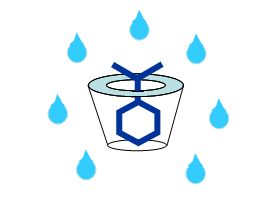Application of cyclodextrins in the environmental technologies is based on their inclusion complex forming ability with the typical organic contaminants of soils, such as PAHs, PCBs, pesticides. The water soluble cyclodextrins improve the solubility of the poorly soluble contaminants, decrease their octanol/water partition coefficient, help their desorption from the soil, enhance their bioavailability for the degrading microbes (microbial degradation) as well as for the plants (phytoremediation). The cyclodextrins, such as RAMEB, HPBCD, applied in the environmental technologies are natural carbohydrates, produced by enzymic hydrolysis of starch and subsequent chemical modification.
Recently there is a novel application of the cyclodextrins immobilized on a macromolecular support as filters adsorbing the xenobiotics, such as pharmaceutical residues, pesticides, plasticizers and other industrial excipients from surface and subsurface waters as well as from purified waste water. In this case the task of cyclodextrin is not mobilization but immobilization of contaminants.
